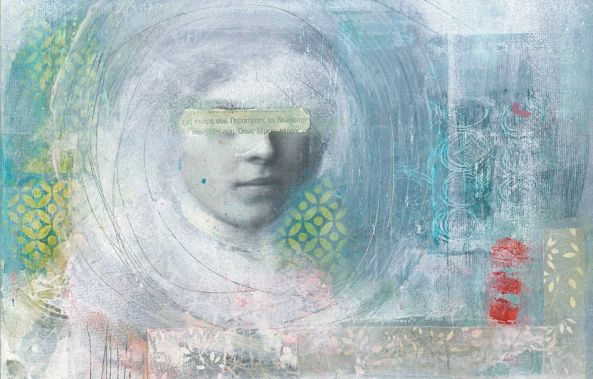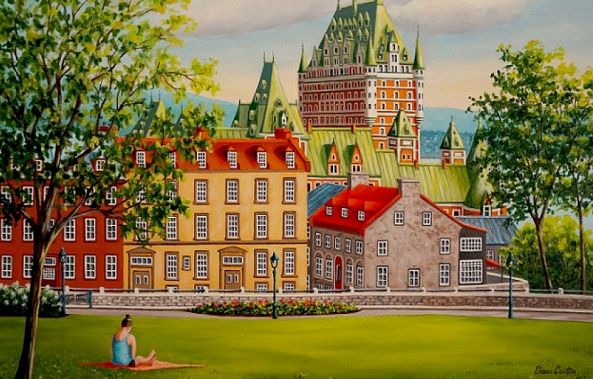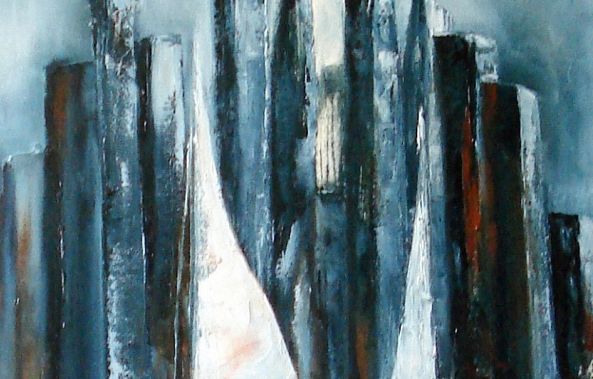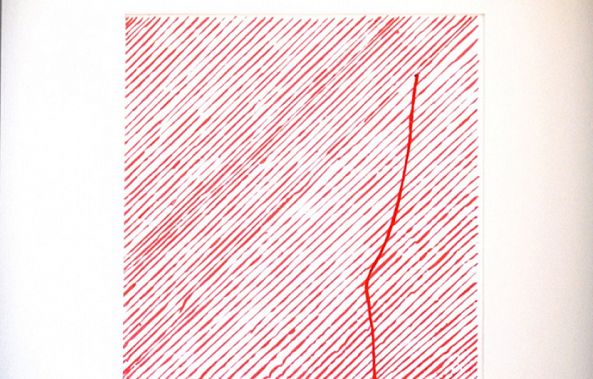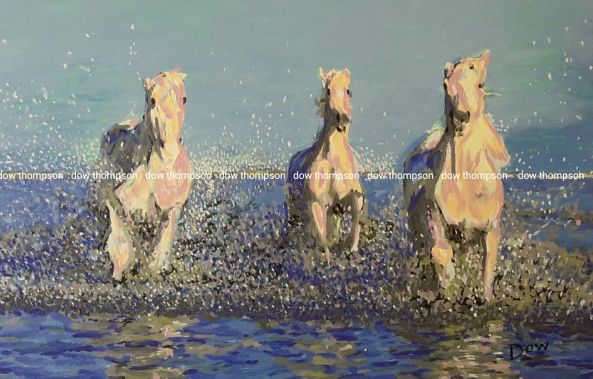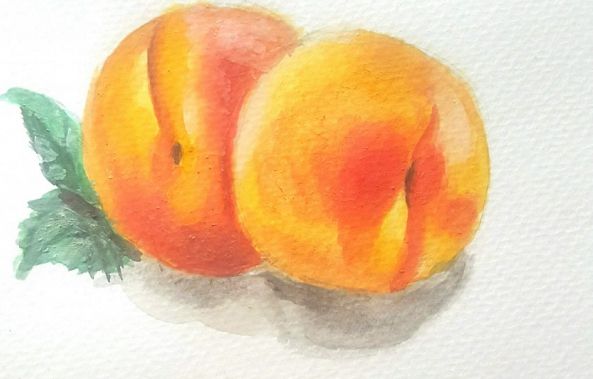Sandro Botticelli: biography, life, famous artworks
Early life
One of the greatest painters of the Italian Renaissance period is Sandro Botticelli. Sandro Botticelli biography begins with his early life in Via Borgo Ognissanti, a street in Florence that remains till this day. While it is unclear about how many siblings this great painter had, it is a known fact that he was the youngest of all the children of his father to stay alive until maturity. His year of birth is also speculative as there are no records that show his actual birth date. The father of this great artists is Mariano di Vanni d'Amedeo Filipepi and he specialized in making leather from animal skin. However, he soon abandoned this profession in 1460 for the more lucrative occupation as a beater of gold leaf.
His father’s newfound profession as a goldbeater was directly responsible for bringing Sandro closer to painters of the Renaissance. Resultantly, Botticelli became an apprentice initially as a seasoned goldsmith. Interestingly, this great artist is believed to be one of the Renaissance painters who underwent an extensive apprenticeship. Sandro grew up in a moderate neighborhood with people from different strata of society. While the neighborhood was majorly comprised of the working class, there were affluent households as well.
Based on historical records, it is believed that Sandro Botticelli is one of the Renaissance artists that underwent an extensive apprenticeship. While it is speculated that he began training at the age of 14, it is said that he received his earliest training as a goldsmith. Following his training in this field, Sandro was still not passionate about being a goldsmith and indicated his interest in being a painter. This led his father to place him under the tutelage of Filippo Lippi, who happens to be a celebrated Florentine master.
Skill and technique
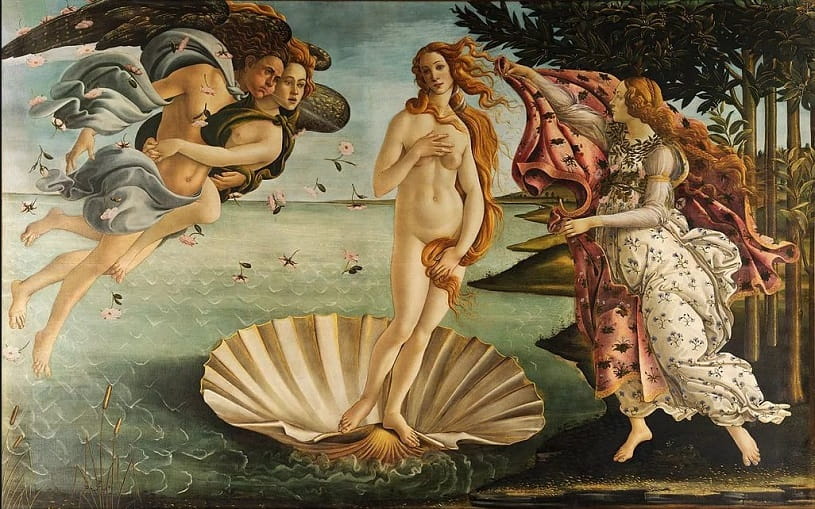
Image via www.italianrenaissance.org
The skill and technique that was adopted by Botticelli could be described as an undiluted form of Florentine renaissance. Under the tutelage of Filippo Lippi, Botticelli gained mastery of painting frescos and panel painting. Botticelli renaissance art is such that adopts the use of Linear perspective extensively. This style of painting is such that creates an impression of depth on a flat surface.
This artistic technique involved the application of horizontal lines, parallel lines and the use of a vanishing point in the creation of captivating and robust art. Most of the artworks created by this great artist involved the use of the linear technique. It is believed that this technique of painting emerged around the 14th century and was pioneered by Filippo Brunelleschi. Botticelli was also known for the creative application of hue and color to his artwork.

He adopted the use of hue and color in the creation of many fascinating artworks. Just like many artists of his time, he specialized in religious-themed paintings and frescos. As was the case with most artists of the renaissance period, Botticelli had many early works before he matured into creating some of his most famous artworks. His style of painting was renowned as one of the best of his era. The intricate use of colors like red, white and yellow lead malachite, verdigris, ultramarine, cinnabar, carbon black and more helped him create a distinctive style that was exquisitely stunning.
His gentle use of brush strokes was such that created paintings that seemed somehow transparent. With the adoption of a linear approach, he was able to create an impression of incredible depth. In respect to his technique while painting panels, he adopted the use of gesso coating extensively. This wasn’t uncommon as this was the standard practice when handling a panel artwork at the time. One thing that was particularly fascinating about his use of colors is the fact that he could create the effect of lighting in a very persuasive and believable way.
Early works
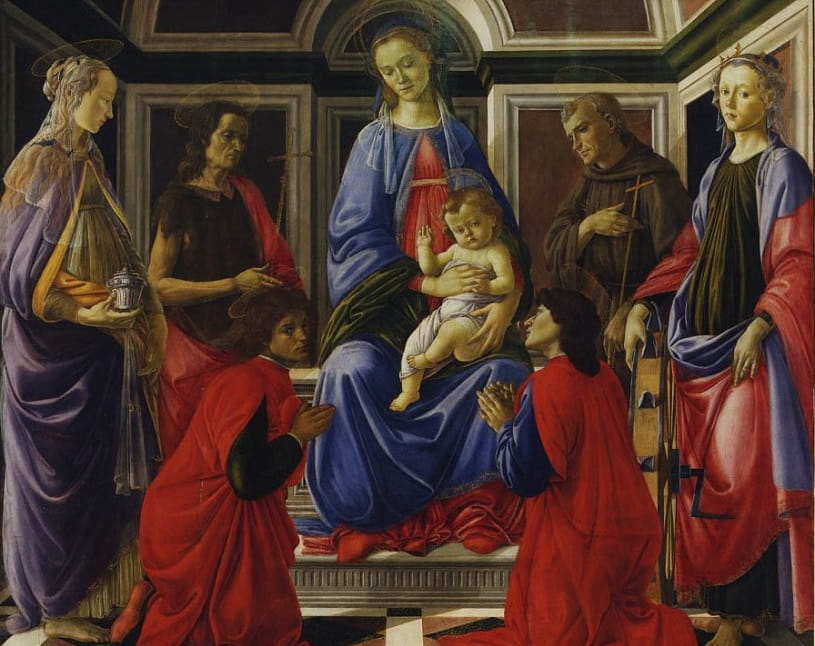
Image via https://thearkofgrace.com/
Sacra conversazione is one of the earliest works of this great artist. Most of the paintings at the time were often on religious subjects or for religious patrons and sacra conversazione is one of them. This painting is an altarpiece that features as much as eight characters. Although the painting has depreciated over time, its present condition reveals that Botticelli had a great mastery of painting. He was able to create a balance and harmony between all of the characters in one single painting. This painting of the Virgin Mary and baby Jesus being circled by saints demonstrated that Botticelli was great at positioning characters in a painting.
While he had mainly religious patrons, Botticelli was also a painter for wealthy families as well. One prominent family that was a patron of Botticelli’s works is the Medici family. Throughout his early career, Botticelli painted many portraits for Cosimo di Giovanni de' Medici and his sons. The Adoration of the Magi for Santa Maria Novella is one of his greatest works to date. And it was created early during his career. During the period of 1470-72, the painting known as Pala di Sant'Ambrogio was created. This painting showed the Virgin Mary is surrounded by six saints. This painting was one of the earliest works of Botticelli. Other of his early works include St. Sebastian, 1474, Madonna with Lillies and Eight Angels, c. 1478, and Fresco Saint Augustine, Ognissanti, 1480.
Secular works
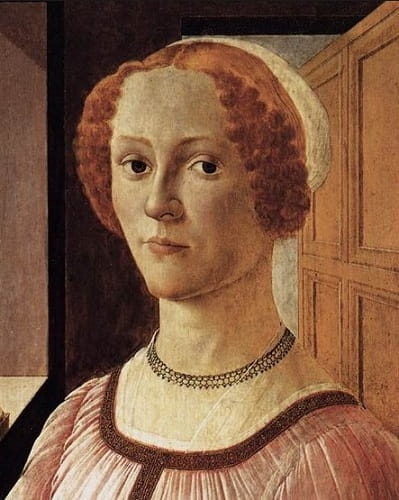 |
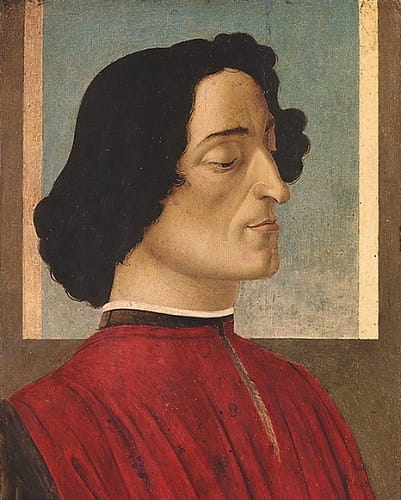 |
| Image via https://wikimedia.org/ | Image via wikimedia.org |
Botticelli was known to create many paintings that were not religious. In fact, it is believed that his secular paintings were one of the earliest forms of non-religious paintings of the renaissance era. Some of his non-religious paintings were portraits made for the powerful Medici family. In addition to such paintings, one of his other celebrated secular artworks includes Sandro Botticelli birth of Venus. It is almost impossible to explore the origins of secular renaissance art without mentioning Sandro Botticelli.
Secularism in renaissance art began to emerge as an inclination towards the appreciation of human achievement and aspirations. Botticelli renaissance art was such that catered to both religious and secular paintings. The Portrait of a Young Woman, Portrait of a Man with a Medal of Cosimo the Elder, Portrait of Esmeralda Brandini, The Discovery of the Body of Holofernes, Fortitude, Portrait of a Young Man, and the Portrait of Dante were some of his many secular works. Venus and mars Botticelli is one of his most famous artworks in the secular category.
Religious paintings
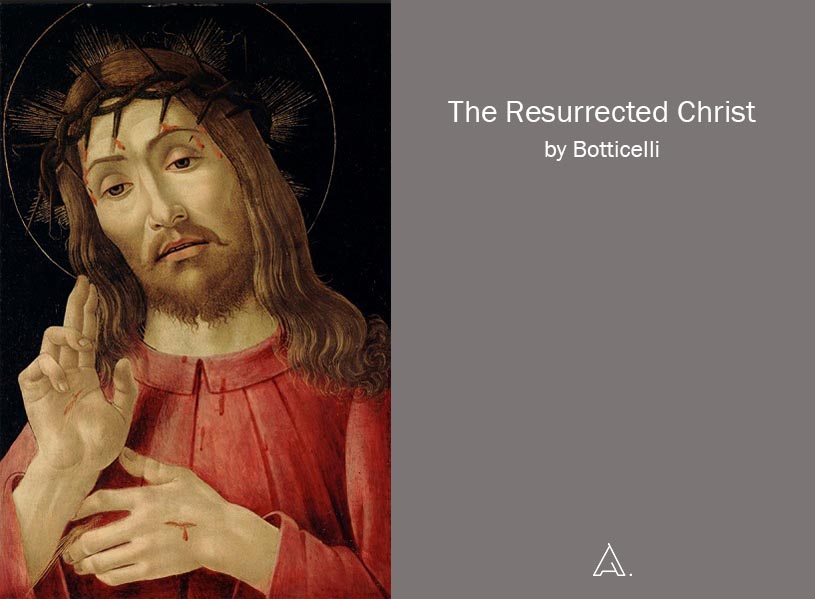
Image via https://www.dia.org/
Religious paintings were very popular during the Renaissance period as most paintings were designed for monasteries and churches. Adoration of the Magi is one of his most celebrated religious artwork. It was created in 1500 and it focuses on one the nativity of the savior as well as the symbolism of the gifts he was presented at birth.
Three Miracles of St. Zenobius, Mystic Crucifixion, The Mystical Nativity, The Descent of the Holy Ghost, The Virgin and Child, St. John and an Angel, The Virgin and Child with Four Angels and Six Saints, Vision of St. Augustine, The Resurrected Christ, The Annunciation, Madonna in Glory with Seraphim, Madonna and Child with St. John the Baptist, Madonna and Child, Madonna with Child and many more. However, his most revered achievement is the fresco of the Sistine Chapel.
Late works
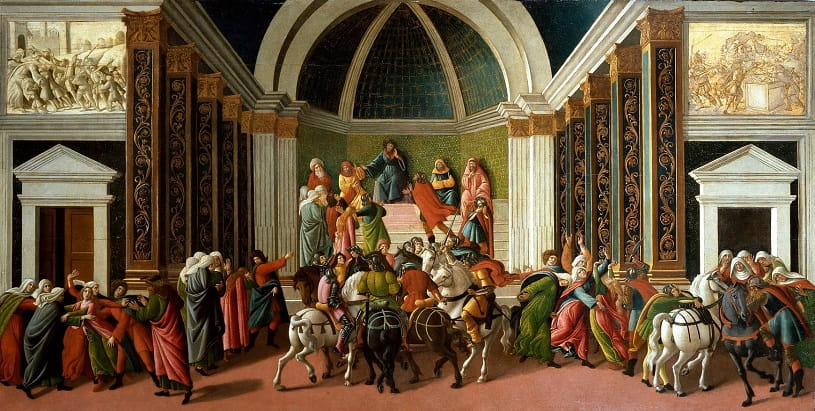
Image via wikipedia.org
While Botticelli enjoyed a flourishing career, his passion for painting was derailed by a preacher known as Dominican friar Girolamo Savonarola. His new found passion drained him of his time and drive for the creation of artworks. Consequently, he suffered serious financial setbacks and became broke in his old age. However, he was adamant about giving up on his fervent commitment for the sect.
The extent of influence of this sect and its preachings on Botticelli was such that he personally destroyed some of the secular paintings that he created through painstaking effort and creativity. While this is merely speculative, The Mystical Nativity is probably the last painting created by the great Renaissance artist. This painting is said to have been created one year and six months after the demise of Savonarola.
By the wake of the 15th century, Botticelli was no longer an active painter and most of his late works were created during this period. The story of Virginia and The Story of Lucretia were some of his impressive works that were created during the end of his professional career. While there are uncertainties about whether he was still a sought-after artist by the wake of the 15th century, and his creation from the late 14th century to early 15th century were his last works.
Most famous artworks
La Primavera
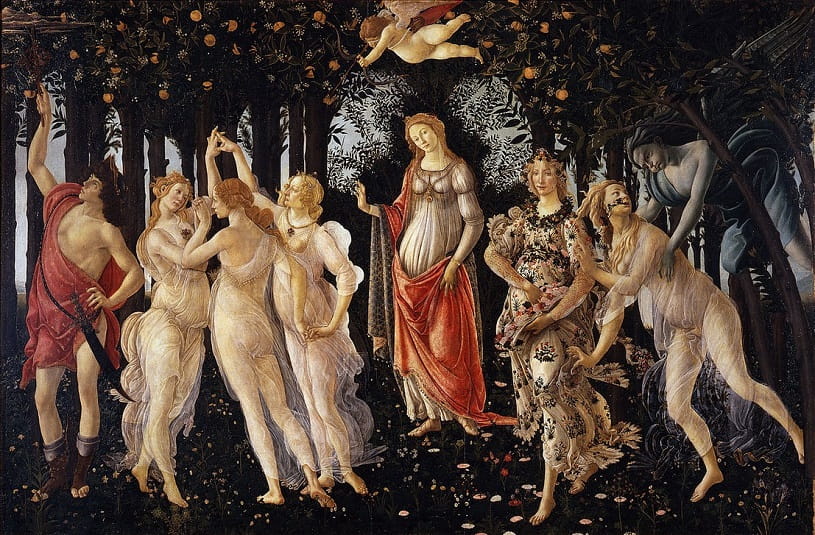
Image via http://www.italianrenaissance.org
La Primavera is a famous painting by the great artist that was completed in 1482. The painting is a metaphorical depiction of spring and features mythical entities in a garden. The painting is such that depicts the spring season. Venus is the character that is placed in the middle of the lush grasslands as a pointer the rejuvenating and fertile nature of the season.
Sandro Botticelli Primavera is a gigantic tempera painting that features a lot of mythical entities. While there are diverse interpretations for this painting, it is widely believed that this painting is an elaborate depiction of the thriving fruitfulness of the world. The Primavera which is said to be reflective of spring is currently located in the Uffizi Gallery.
The adoration of the magi
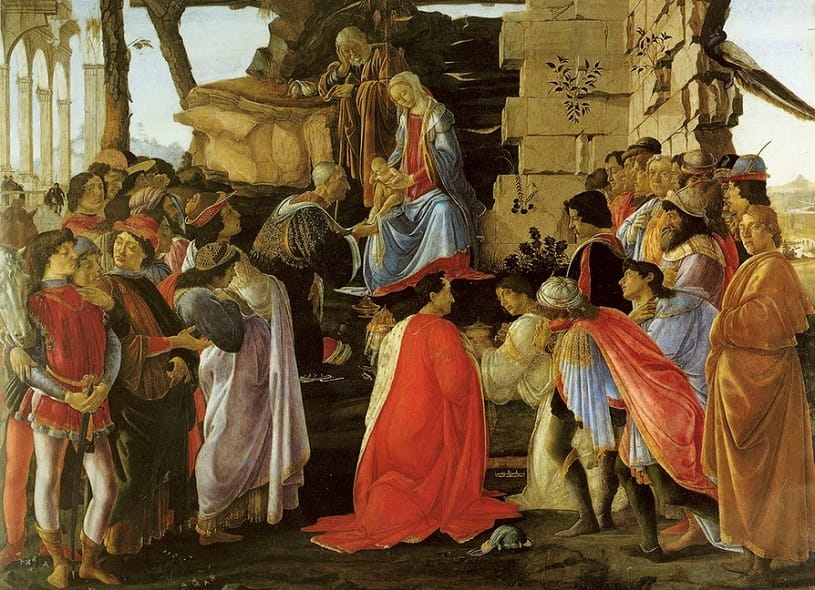
Image via https://sandrobotticellibelmonthonors.weebly.com
The adoration of the magi is one painting that reinforces the reputation of this great artist. While it was commissioned by the Medici family, this painting is centered on an important religious subject. The creation of this artwork is speculated to span through 1475 to 1476. It showcased the presentation of gifts to Jesus and captures the symbolism of the gifts as well. It is alleged that a Mecidi was one the far right of the painting and their characters who were assumed to be members of the Medici family or even Botticelli himself.
Chart of Hell
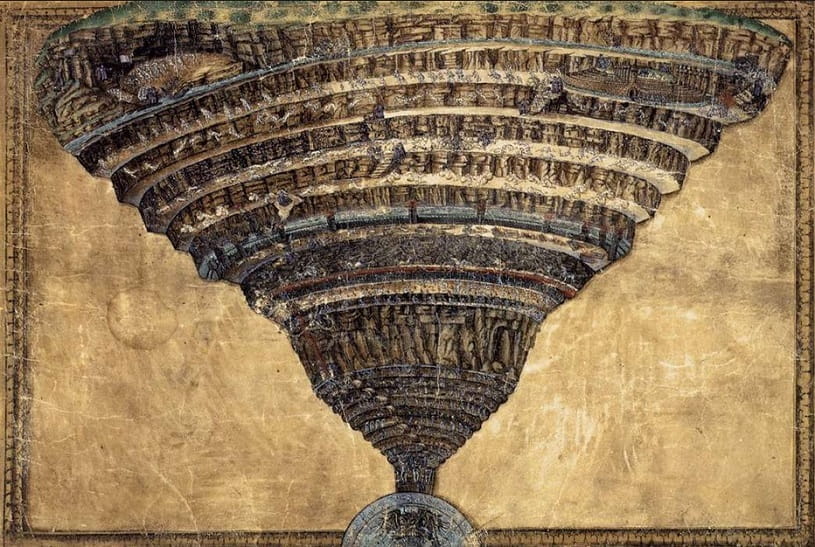
Image via https://www.artbible.info/
Chart of Hell is a painting is centered on a religious theme and offers one of the most impressive depictions of Dante’s Inferno. The painting is such that utilizes a paint and brush to give a vivid representation of the descent of the Virgil. This painting is such that gives an intense representation of Virgil’s hellish experience.
Mars and Venus
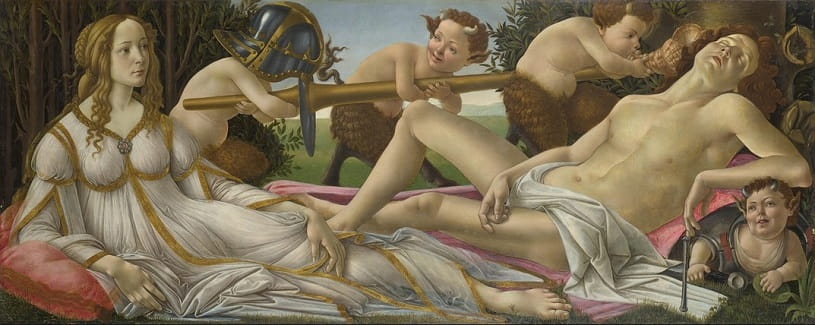
Image via http://www.sandro-botticelli.com/mars-and-venus.jsp
Mars and Venus are one of his most famous artworks and it depicts Venus and Mars sitting right next to each other. However, this depiction is such that shows Venus being awake while Mars was fast asleep. The symbolism of the painting is aimed at showing that Love conquers wars. Venus is the goddess of love while who is seen being awake while Mars the god of war who is fast asleep.
Madonna of the Magnificat
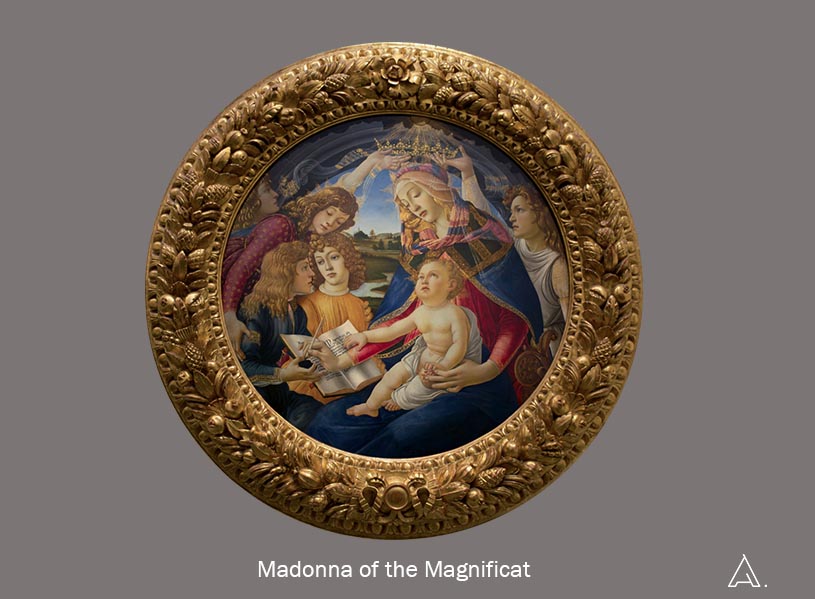
Image via https://en.wikipedia.org/
Madonna of the Magnificat is another painting that could be described as a respected painting of Botticelli. This painting which appears in a circular form is such that shows the Mary painted in gold. From the rays to the hair was painted in gold and stands as one of the most expensive paintings ever made by Botticelli.
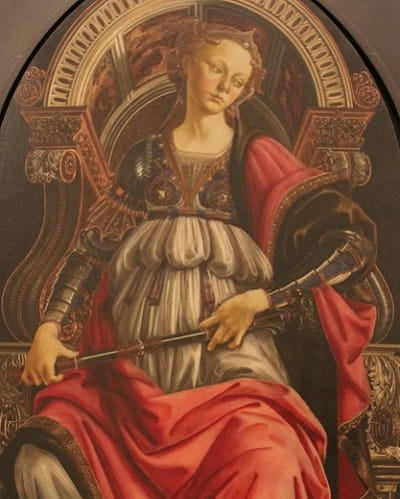 |
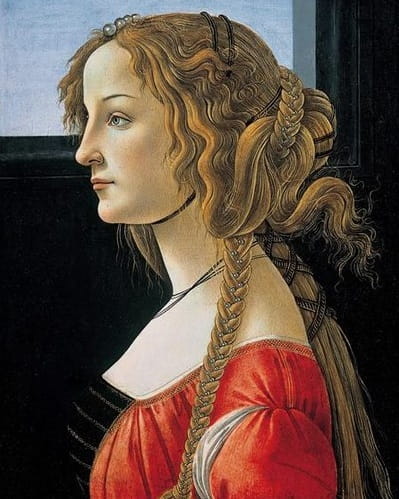 |
| Image via https://commons.wikimedia.org/ | Image via https://www.wikiart.org/ |
Sandro Botticelli Fortitude is one painting that has widespread appeal and could be grouped under his religious painting category. This painting is a part of a seven-panel painting that is intended to adorn the high chair backs in a tribunal hall. This painting shows the various faiths that a Christian should have.
There are many experts that argue that this portrait is that of Simonetta Vespucci who is a young noblewoman that was believed to be prettiest in Florence at the time. However, the Idealized Portrait of a lady is one of the best works of this great artist. The elaborate adornments and all of the ribbons, beads, and feathers are some of the features that make it abundantly clear that the lady was from the upper strata of the society.
Influence on Renaissance art
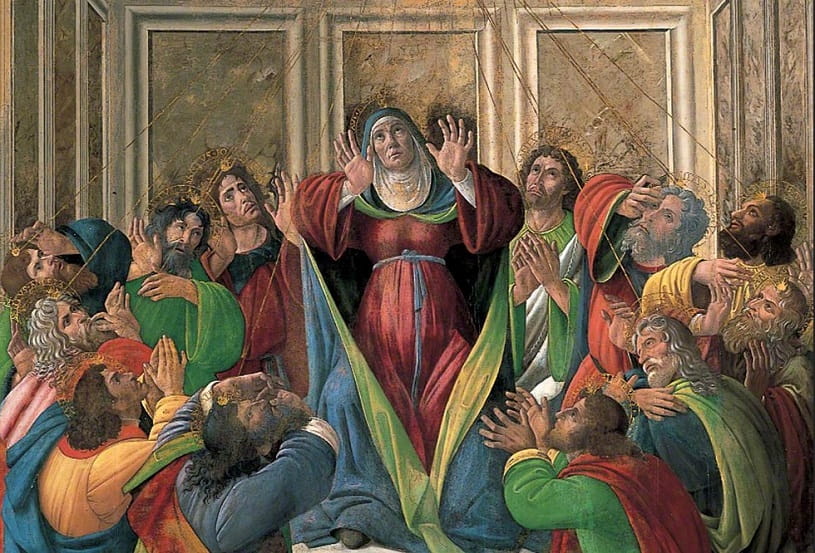
Image via https://artuk.org/
Botticelli is an artist that created many impressive renaissance arts that are admired to date. This great artist is one of the most respected visual artists of the Renaissance era. His mastery in painting was such that made most of his fantasy artworks very realistic and believable. Through linear perspective, he was able to create artworks that are stunning and unbelievably beautiful.
While he created a good number of impressive paintings throughout his professional career, there are some paintings that stood out from the rest and earned him a place as one of the most revered artists of the renaissance era. While the revered status of some of these paintings require explaining others have an incontestable reputation. One of such paintings that put Botticelli renaissance art at the forefront is Sandro Botticelli birth of Venus. Created during the period of 1484 to 1846, this painting is such that combines classic Greek painting with Italian renaissance.
 |
 |
Given that Botticelli handled many paintings for the Medici family, it is believed that his painting was authorized by them as well. However, this is a mere speculation. The painting shows a newborn goddess Venus at the seashore. The goddess who stands naked at the seashore is welcomed by a host of other Hellenistic gods. Zephyr who seems to be carrying nymph blows wind at her.
To the right of the seashore stands Pomona who is believed to be the goddess of spring. This artwork on work of tempera on canvas reflected the mastery of painting and use of colors. These artists were known to have a welcoming disposition towards new painting techniques and this is clearly demonstrated by his use of Tempera Grassa.
Botticelli’s contributions to the Renaissance are embodied in his contribution to the Sistine Chapels and his unique painting style. Botticelli renaissance art saw the creation a lot of mythological works and demonstrated an unrivaled mastery of Linear perspective. He will forever be remembered for the Sistine Chapel and the Birth of Venus which currently sits in the Uffizi Gallery.

